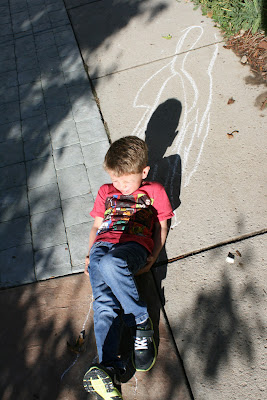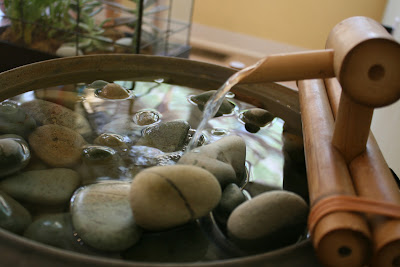I am both an artist and a Montessori teacher. I received my first Montessori training ten years ago and have been teaching ever since. As a Reggio inspired studio art teacher in a Montessori school, I certainly don't ignore all that I have learned over the years as a Montessorian. My studio philosophy follows the Reggio Emilia approach and the corresponding theories of social constructivism amidst an emergent curriculum. I begin each year with questions and curiosity. These questions determine the studio set up and my Montessori roots ground my approach. I give attention to detail and believe strongly in the importance of a fully prepared environment and the role of a teacher as a conduit for experience and a model of behavior.
Consistent with the Montessori classrooms, I begin the year with a few shelf works that encourage independent activity.
Every child begins their studio experience with a daily drawing, this serves two purposes: 1) It provides a gentle transition between classroom activity and studio explorations and 2) It is a wonderful opportunity for me to connect with each child and gauge how their day is going. Once drawings are complete, we spend some time talking about what was drawn and often touching on one or two of the basic elements of art.

At this time of the year, much of the activities are basic and I spend the bulk of my time observing children at work, giving grace and courtesy lessons (these are the simple rules that help our community operate smoothly: like putting on an apron, pushing in a chair, using an art mat, asking for help, etc.), chronicling the number of children choosing each activity to gauge interest and listening to children's dialog and conversations. There are also several areas for children to relax, reflect and observe. I find these important all year long but particularly at the start of the year when children are getting used to so many new things and schedules.
I have included a number of sensorial activities. We talk about how artists "see" through all of the senses. We use our sense of smell and taste to explore herbs at a sensory table.
And our tactile sense to investigate a variety of textural surfaces.
We have a shelf devoted to interesting natural objects,
A fountain that flows water over blue/green river stones,
And a natural wood tree house on a table with a number of provocative materials including: moss, stones, branch building blocks, bamboo "rocks", and several little people.
This activity affords opportunities for dramatic play and is a rich resource as I observe the children, their interests and interactions. As the year continues the studio will become a place to explore ideas, questions and theories in collaboration with others, more and more.
Overall it has been a very interesting week.





















































